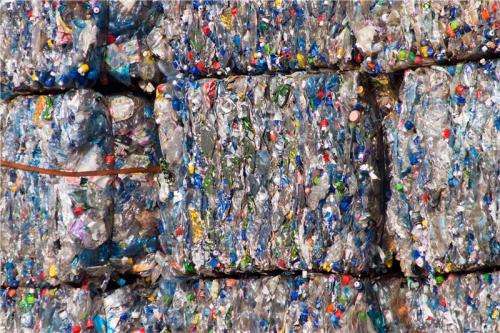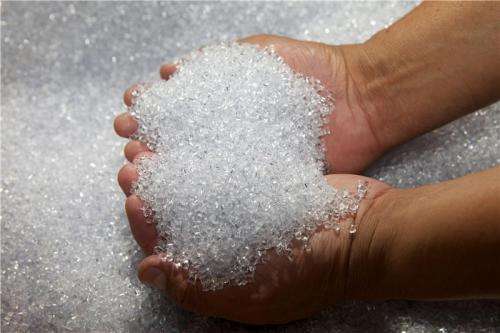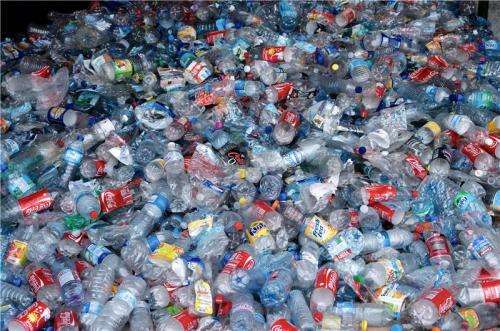Chemical marker facilitates plastic recycling

Some years ago, a small recycling company asked the Center for Research in Advanced Materials (CIMAV) at Monterrey in the northeast of Mexico, a technology to identify PVC from PET, since the material caused them losses in their polymer recycling process.
After research, CIMAV developed a chemical marker which identifies the PVC. It can be applied as a spray and in less than a minute it detects the flakes of said material.
Sergio Pérez Alfonso Garcia at CIMAV, collaborator in the research, explains that the company told them that a single bottle of PVC affects the price of a ton of PET. So they needed a system of differentiation for a better quality and competence in the field.
"What was given to the company was a chemical formulation to simply mark the product that needs to be removed, in this case the PVC; because it has physical properties similar to PET."
The group at CIMAV investigated what could be done technically and scientifically to deliver a formulation to the recycling company, and developed a product that the company could be applied by a simple test, which saves time and lowers costs.
This formulation may be applied before separating the bottles, however, the company applies it when the polymers are already shredded, so they produced a liquid marker which is used as a spray on the flakes and in 30 seconds detects those which are made from PVC showing them in a bright color that stands out from the PET.

The chemical marker was specifically designed for companies dedicated to recycling PET, but is unknown if the product is commercially available.

"The chemical marker we designed is economical, the question is to train people to handle it."
Provided by Investigación y Desarrollo




















